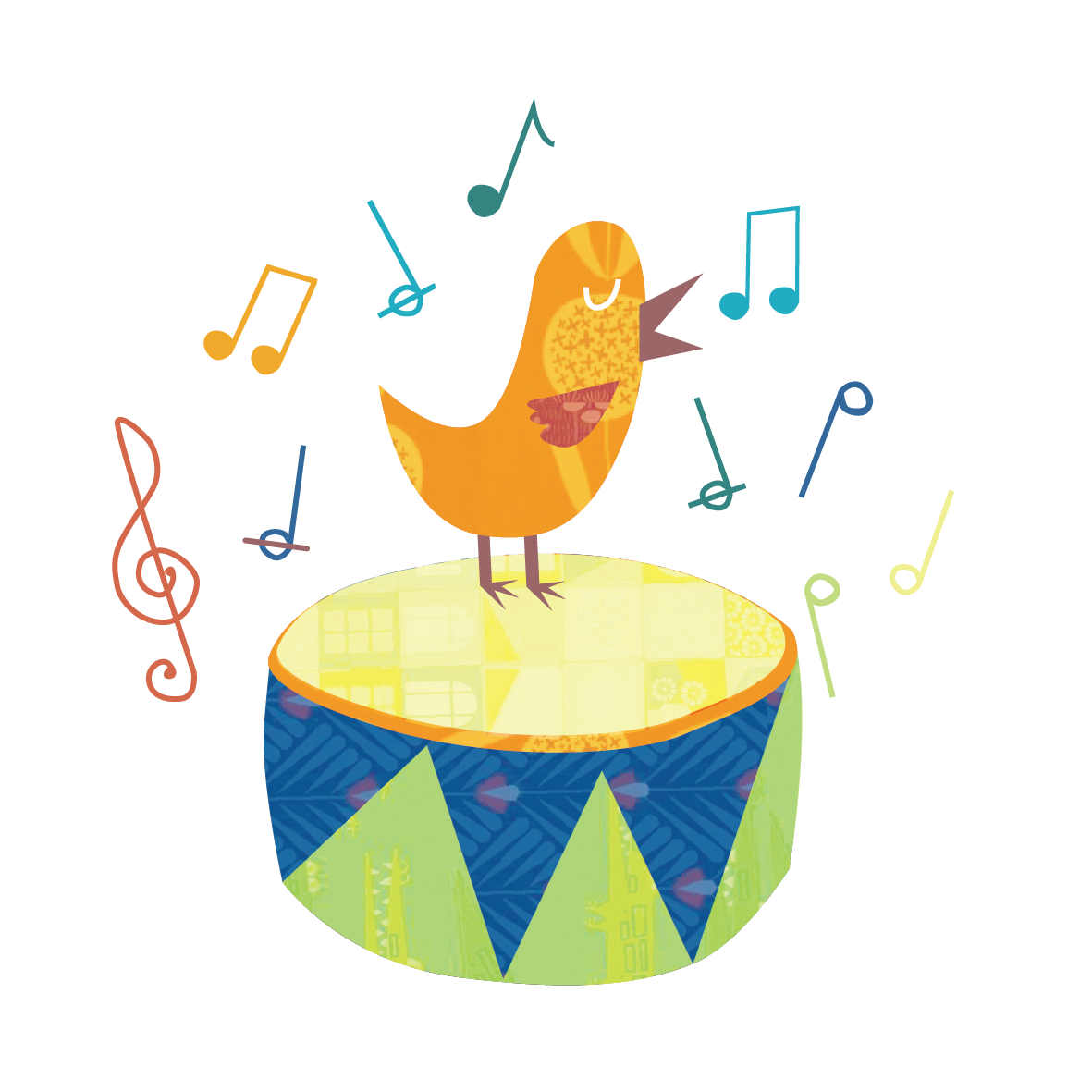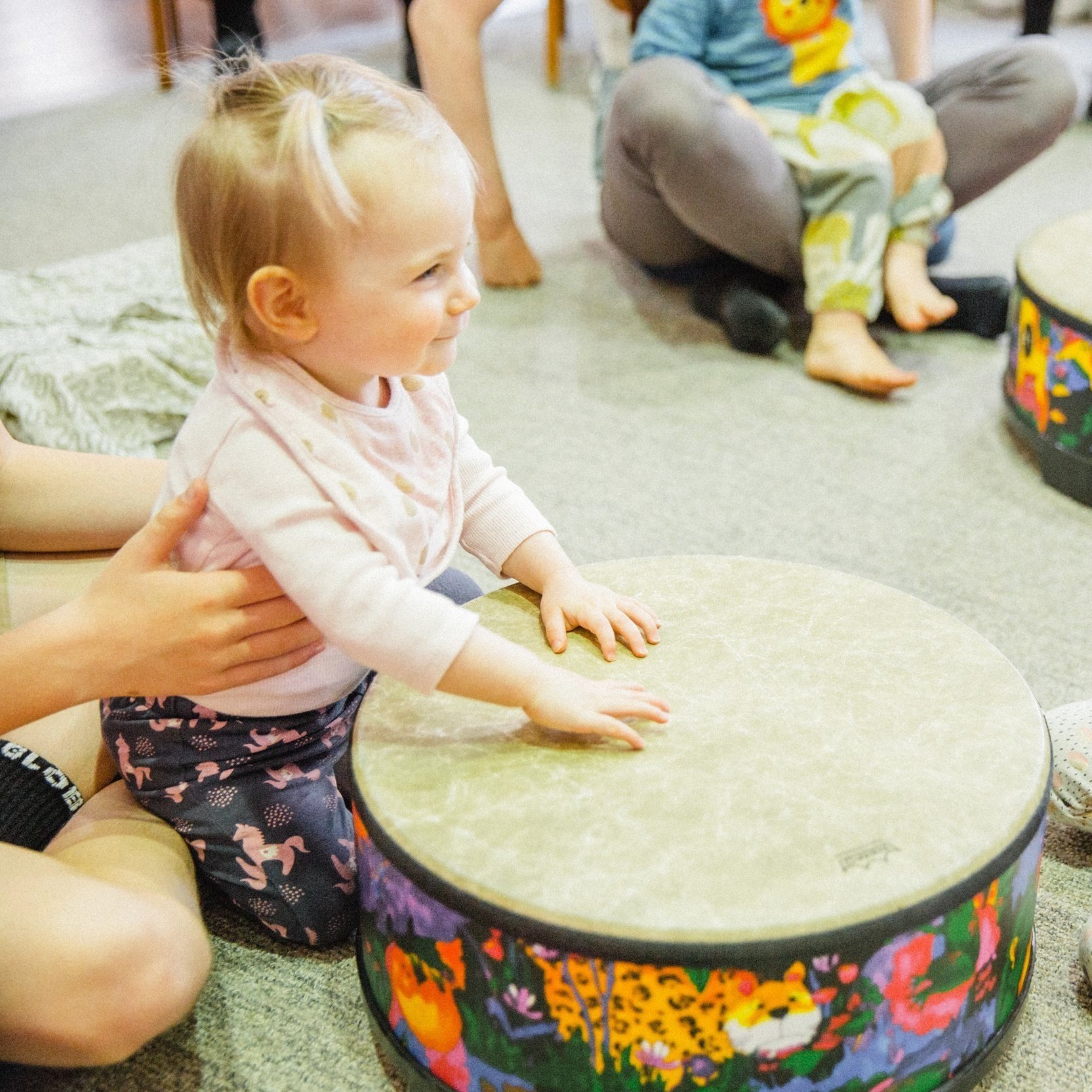Gross Motor Development in Toddlers + 5 Ways Music Can Help
Motor skill development in toddlers can be a tricky area to navigate as their impulse control catches up to their physical coordination. Therefore, bumps and bruises seem to be an anticipated norm when it comes to gross motor development in toddlers. Research shows that limiting screen time may assist your toddler in developing across each area of development so if they are not sitting still, they’ll naturally be on the move. As with many areas of development, time and practice makes perfect!
There are many ways in which music can aid gross motor development in toddlers. Music making or dancing along to their favourite songs encourage the use of all those big muscle groups and help to develop their emerging coordination skills. Here are five ways you can further assist your toddler in developing gross motor skills using music:
1. Exposure to a range of instruments
Using their hands to bang a drum uses their Biceps and Triceps as well as all that fabulous hand-eye coordination. This make a great first step. Graduating to shaking bells while marching to a beat gets those little legs moving and encourages core strength as they hold their bodies upright and move around. The more fun your child has using these big muscle groups, the more often they will want to engage in these strengthening activities. As the joy in play is reinforced, these types of experiences will become second nature.
2. Dancing to music
Is there anything more adorable than a little tike getting their boogie on? I think not!
Introduce your toddler to dancing with scarves or ribbons and watch the way their movements change. Ask them to move like a butterfly, hop like a kangaroo or swim like a fish and see just how broad their range of movement can be. Switching these actions up means their body will be activating lots of different muscles to balance and stabilise themselves as they move and play.
There’s also nothing wrong with a good old-fashioned disco dance-off either! Jumping to the beat offers the opportunity to stretch those legs out and anticipate landing safely.
3. Sing songs with actions
Moving on from finger-play songs can be an exciting time in toddler development-for both child and adult. They may be ready for big, body movements as they enjoy songs like Head, Shoulders, Knees and Toes , A Sailor Went To Sea or Row, Row, Row Your Boat. Sit with your child facing you as you sing these songs together to allow them to mimic your movements.
4. Bubbles
Bubbles and music? PHWAOR! Yes please, this combo is a developmental powerhouse! 🧠
Singing about bubbles while your toddler attempts to catch them isn't just adorable, it's stimulating their visual tracking and spatial awareness and can offer such joy to a parent and child.
All that jumping, waving, reaching, watching, and clapping is strengthening their hand-eye coordination and gross motor development, building critical neural pathways while they giggle!
We love using bubbles in our play because they’re so simple and joyous the children think we’re just having fun, but we know there’s so much more going on!
For a song about bubbles you can sing with your kids, click here.
Music and movement can go hand in hand very naturally and bubbles are a great way to get your toddler moving without any pressure to perform a certain task in a certain way. The pleasure in music and movement is all in the process for your toddler and can be really enjoyable for both child and adult alike. How many other ways can you think of to get your child moving using music?
Bubbles are brilliant for visual tracking. But what is it and why do we have ALL THE LOVE HEART EYES for it?
Holy, moley! Where to start?! Actually, we think this might have to be its own blog in the future… But let’s scratch the surface a little now.
Well, visual tracking, like following a bubble with their eyes, watching a parent walk around the room, follow a leaf gently moving on a tree branch, tracking is crucial for childhood development for several reasons and best started when very young children.
After years of working with very clever exercise physiologists, occupational therapists, and childhood movement specialists here are our favourites:
Helps Reading: Smooth eye movements (tracking) are essential for reading fluency. Children need to be able to move their eyes smoothly from left to right across a line of text. Poor tracking can lead to skipping lines, losing their place, and difficulty comprehending what they've read.
Helps Writing: Children need to be able to visually guide their hand movements, copying from the board, aligning letters, and maintaining proper spacing. Using tracking to literally keep track of where they’re up to is incrediblly helpful for young writers.
Increases Hand-eye coordination: We often think of activities like catching a ball, and drawing which are great, but better hand-eye coordination also means they develop a better understanding of where their hands are (visually guided hand movements) all (most) of the time. Think better at using utensils, better self-care, greater independence with fiddly things like buttons, zippers and laces.
This less accidentally bopping their grown-up in the nose - this parenting thing can be a risky biz! We love this because it has a huge flow-on effect for children’s self-esteem and self-talk. *chef’s kissIncreases body coordination and balance and helps children’s understanding of spatial relationships while navigating their environments.
HELLO fewer accidentally broken objects around the home! Why? Visual tracking helps the brain create pathways that integrate the visual and vestibular (balance) systems, which is critical for coordinating movements, and processing sensory information.And our absolute favourite?
Attention and focus: Tracking a moving object requires sustained attention and focus, increasing children’s ability to concentrate and filter out distractions. Attention and focus may be the single most important ingredients for learning pretty much anything, and we’re kinda obsessed with supporting educators and parents to create spaces that enhance both of these for children.
5. Take them on a horsey ride
Singing songs together about galloping through the fields or trotting down the lane while you bounce your toddler on your knee provides the chance for your child to identify what muscles they need to engage to keep their balance. Plus, these types of songs are really fun and your toddler is highly likely to absolutely love them. Added bonus: As your toddler grows, you’ll be strengthening your quadriceps, hamstrings, and calves at the same time! It’s an excellent way for both of you to stay fit and active, as it should get your heart rate going So much more fun than squats, ha ha!
Why is this important?
During this delightful playtime, your child will use their core muscles to stabilise their body and maintain balance and posture as they enjoy the ride. They'll also engage their leg muscles as they instinctively adjust to the movement, pushing their feet into the surface below them (and feeling beat in their feet - which is very important if we want to dance in time), and their back muscles will help them stay upright.
Beyond the physical benefits, these types of songs are really fun and your toddler is highly likely to absolutely love them. As you sing and play, you'll notice their laughter and excitement. You'll be creating cherished memories and strengthening your bond. WIN, WIN!
Let’s talk about the grown-ups for a minute, cos you know who works really hard? Anyone who is fully engaged with a toddler!
Whether you’re dancing with a little one, or galloping them along for a horsey ride you’re sure to get your heart rate up, and when you do your brain releases a cocktail of feel-great chemicals.
Here are a few of the star players:
Endorphins: These are your body's natural painkillers, and they're often referred to as "runner's high." They help reduce the perception of pain and trigger a positive feeling in the body.
Dopamine: Known as the "reward chemical," dopamine is associated with pleasure and reward. It’s released during activities that your brain considers beneficial or enjoyable.
Serotonin: This neurotransmitter helps regulate mood, appetite, and sleep. So shaking your tail feather can boost serotonin levels, which can improve your mood and overall sense of well-being. YES, PLEASE!
Norepinephrine (Gesundheit! HAHA!): This chemical helps manage your body's stress response. It can increase alertness and energy levels, helping you feel more awake and focused.
Anandamide: Often referred to as the "bliss molecule," this neurotransmitter plays a role in pain, depression, appetite, memory, and fertility.
Getting your heart rate up through play, dance and exercise is a great way to boost these chemicals and feel more energized and happy!
Do you have a favorite way to get your heart pumping?
We love showing our kids how we move and support our own health and well-being at Fit Body Fit Mind. If you’re interested in hearing how a little growth mindset transformed post-partum blues into a family of powerhouses check out The Sounds Like This Podcast with Tania and Dean Popplestone.







